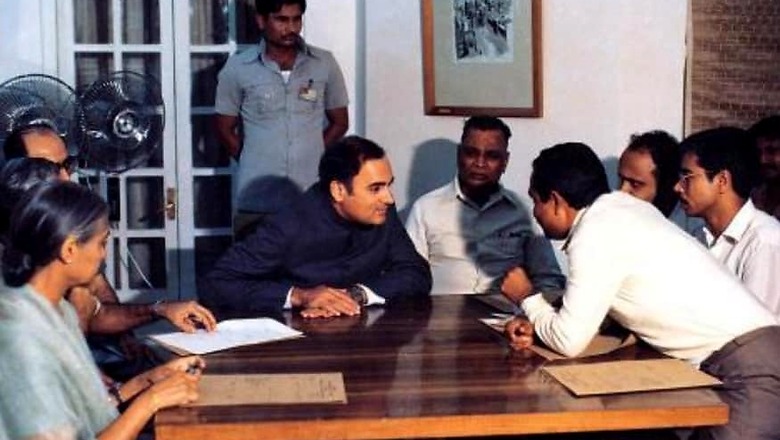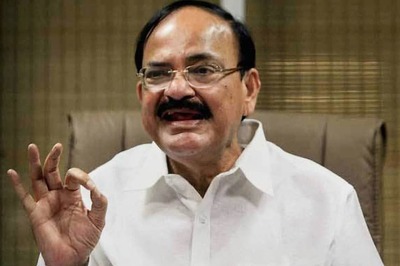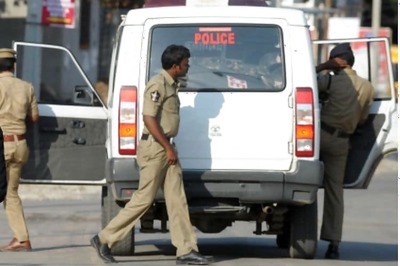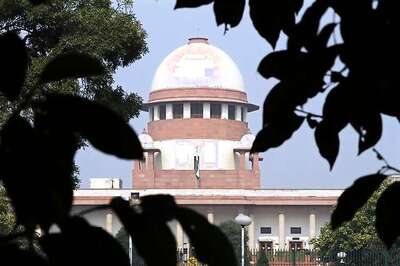
views
The sky in Guwahati was filled with smoke and roads choked with ash from burning cars when the Citizenship Amendment Act 2019 came into effect in India. President Ram Nath Kovind’s assent to the Bill, turning it into an Act, on Thursday rekindled an old collective memory as youths protested against the legislation defying a curfew.
The Act grants Indian citizenship to Hindus, Jains, Christian, Sikhs, Buddhists and Parsis from Bangladesh, Pakistan and Afghanistan on the contested claim of religious persecution. But the old and young, flooding WhatsApp groups, wondered if this is the Second Assam Agitation – until moments before an Internet ban.
Amid chaos, the regional party, Asom Gana Parishad (AGP), which cemented immigration of foreign nationals in state politics, is seen absent from the scene of politics and protest. The lone AGP MP in the Rajya Sabha, Birendra Prasad Baishya, had voted in favour of the Act.
Nevertheless, the spirit and sentiment of the agitation, which lasted for six years between 1979 and 85, can still be felt in protests today. On Friday, locals in Guwahati hailed 17-year-old Sam Stafford, who died after sustaining a bullet injury at a firing incident, as a “martyr”. The same honour was bestowed on 22-year-old general secretary of the All Assam Students Union (AASU), Khargeswar Talukdar, first of the 855 martyrs in the decades-old agitation.
Five Congress and one BJP government later, the AGP’s election symbol – the blue elephant – may have faded in memory. Bu it had triumphed 33 years ago when Nagaon student leader and university student, Prafula Kumar Mahanta, was elected as the youngest chief minister in history. He was re-elected in 1996 and has struggled to retain the political relevance of his party ever since.
Old Sentiments
On December 24, 1985, 32-year-old Mahanta led a group of university boys to form the youngest state cabinet in India. In an election, mostly won by Agitation leaders who contested as Independents, AGP bagged 60 seats, the Congress got 25 and the BJP only three in the 126 seat Assembly.
Sangeeta Barooah Pisharoty in her book ‘Assam: The Accord, The Discord’ has revisited the formation of AGP in conversations with its leadership. The regional party’s election manifesto in its maiden plunge into the electoral politics of Assam indicated “the party’s awareness of the need to undo the damage of that the Agitation had inflicted on the state’s social fabric,” she said.
The party had promised to look for a “permanent solution” to the issue of immigration of foreign nationals and ensure that “no Indian national is harassed in the name of language and religion.” In a first, it had also promised to survey and implement agrarian programmes for “speedy economic development in Char areas” which are mostly dominated by Bengali Muslims.
That election year marked the end of the agitation with the signing of the Assam Accord between leaders of the AASU, All Assam Gana Sangram Parishad (AAGSP) and former PM Rajiv Gandhi. Brighu Kumar Phukan and Mahanta, the then general secretary and president of the AASU, respectively, were signatories to the Accord. Phukan went on to become the youngest home minister at the age of 29.
Although the regional party was formally launched only two months before the election, its ex-AASU leadership at the helm of affairs in a new body had public opinion in their favour. “But, what argument is it that we Assamese would have to sacrifice our home and hearth, our land, for their (foreigners) freedom?” then then general secretary of AGP, Atul Bora, had said in his book on AASU conventions.
Bora, who is currently the president of the AGP and had held the position of AASU general secretary during the Agitation, was a staunch critique of the Indira Gandhi government amid demands to protect Assam from foreigner settlement. The same sentiment, perhaps, echoes in the protests today, albeit without the presence of AGP, Atul Bora and Prafula Mahanta.
Assam fears the Citizenship Amendment Act will lead to lakhs of Hindus from Bangladesh being granted Indian citizenship, which will change the demography and culture of the state. Protestors said Assam bore the brunt of immigrants between 1951 and 1971 for which the National Register of Citizens (NRC) exercise was conducted to weed them out. Passing of the CAA nullifies the NRC in Assam.
Reversed Fortunes
Despite the presence of AGP’s regionalism and AASU’s Assamese nationalism, the 2016 assembly elections reversed the fortunes of AGP and BJP. The latter won 60 seats riding along the Narendra Modi wave in 2014. The AGP raised its tally from 2011 but had only managed to win 14 seats. Both parties entered an alliance, allowing the BJP to form its first government in Assam.
But with growing dissent over the CAA, many functionaries of the alliance such as the chairman of Assam Petrochemicals Ltd Jagdish Bhuyan, chairman of Assam State Film and Development Corporation Jatin Bora, former Assembly speaker Pulakesh Baruah among others have resigned from their posts.
After much backlash, AGP, though hasn’t ended the alliance, seems to be under pressure to reconsider its stand on the CAA. Some reports claimed the party may approach the Supreme Court on Monday.
Historically, Assam has remained a Congress ruled state but it was only with AGP’s intervention that Assamese nationalism enshrined itself in politics. Now that the alliance voted in favour of the Act, public sentiment in Assam feels twice cheated: first by the BJP, which was elected to power in the Centre and the state with over whelming majority, and then by AGP and former AASU leaders.
Assam chief minister Sarbananda Sonowal, senior state minister and BJP’s ‘chanakya’ in the north-east Himanta Biswa Sarma, the to-be DGP of Assam Police Tapan Deka and many sitting legislators, activists, businessmen and bureaucrats are all ex-AASU leaders and its lifetime loyalists. Sonowal, before the joining the BJP in 2011, had also been an elected MLA and MP of the AGP.
Electorally, the way saffron party has outgrown others may find logic in the sprouting of new regional parties since 2011 and the division of votes. Its vote share increased from 1 per cent in 1985 to 29 per cent in 2016. Though the BJP may have swapped positions with the AGP today, it stands on the wrong side of history, protesters in Guwahati said.
However, the lack of clear leadership and direction among the protestors who defied curfew and armed-army persons has hurt AGP more than its ally. The AASU has called out against the chants of ‘Joi Aai Axom’ (Glory to Mother Assam) and the traditional gamosa (cotton towel) being used to justify vandalism by mobs in Guwahati and has urged the public to use non-violent means of protest. Here, the AGP has remained silent.
The resurgence of public dissent against a law granting six non-Muslim communities from three neighbouring countries citizenship and settlement simmers without its political arm – the AGP, but still thrives on student politics championed by the AASU and other student organisations.




















Comments
0 comment